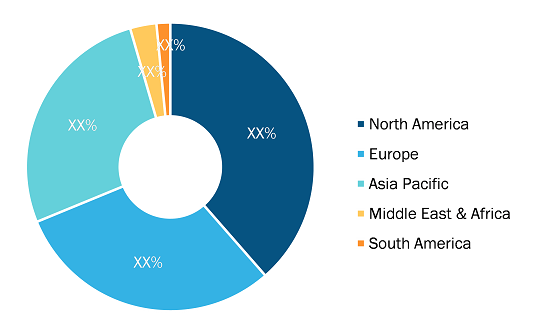The ISDN modem market is expected to decline from US$ 53.54 million in 2022 to US$ 15.85 million by 2028; it is estimated to register a CAGR of -18.4% from 2022 to 2028, according to a new research study conducted by The Insight Partners.
Demand for Backup Line Across Underdeveloped Countries to Drive ISDN Modem Market During 2022–2024
An ISDN BRI connection was used to utilize existing telephone infrastructure in a business. BRI had a digital line with two B and D channels and has the highest speed of 128 kbps. BRI line offers 128 Kbps over a standard copper wire and is broken down into 16 Kbps over the D channel and 64 Kbps over the B channel. ISDN BRI aims to enhance voice services and, therefore, acts as a level for basic service. There is one signaling channel (D channel) and two data-bearing channels (B channels) in BRI for connections. The two channels are independent. For instance, one channel is used as a TCP/IP connection to a location, while another channel is utilized to send a fax to a remote location. In iSeries, ISDN supports a BRl which equals a speed of 144 Kbps. Moreover, BRl itself needs an operating overhead of 48 Kbps, which created a demand for digital pipe of 192 Kbps. The growing number of small enterprises across the globe has created a demand for BRI. However, BRI has not received acceptance within large-scale businesses, owing to its low reliability and speed.
ISDN Modem Market – by Region, 2022
ISDN Modem Market Size and Forecast (2021 - 2034), Global and Regional Share, Trend, and Growth Opportunity Analysis Report Coverage: By Type [Basic Rate Interface (BRI) and Primary Rate Interface (PRI)] and Application (Residential and Commercial)
ISDN Modem Market Size & Emerging Trends 2034
Download Free Sample
Source: The Insight Partners Analysis
PRI is known for offering better connections, faster speed, and more reliable service. PRI is encompassed with a D channel and either 23 or 30 B channels depending on the country the user is present. PRI is not supported on the iSeries. A digital pipe with 23 B channels and one 64 Kbps D channel is present in the usual PRI. In PRI ISDN modems there are 23 B channel of 64 Kbps each and 1 D channel of 64 Kbps that equals to 1.536 Mbps of connection speed. The PRI service also uses 8 Kbps of overhead. Therefore, PRI requires a digital pipe of 1.544 Mbps. In the US, PRI is inclined to use one D channel and 23 B channels.
Compared to BRI, the PRI modems were adopted more because PRI was the main interface chosen for high-speed internet access during its roll-out in the market. The main reason for their high-speed network connectivity is due to the communication channel the PRI occupy. As the number of bearers channels rises, the transmission speed also gets boosted. There are 23 bearer channels, depicting transmission speed at around 1.536 Mbps. Therefore, PRI was preferred over BRI in large firms due to its high speed.
Asia Pacific is expected to be the fastest growing market till 2025 as the ISDN infrastructure is about to vanish by the end of 2025 globally. Currently, India is one of the main suppliers of ISDN terminal adapters or ISDN modems to domestic and international customers across the region. Moreover, the country witnessed a sudden hike in its ISDN terminal adapter exports in 2021, which has witnessed a growth of more than 800% compared to its exports from 2020. Such instances have driven the ISDN modem market size across the region during 2020.
The Asia Pacific ISDN modem market size is segmented into Australia, China, India, Japan, South Korea, and the Rest of Asia Pacific. China, Japan, and India have large telecommunication industries in the region. The exports of ISDN terminals from countries such as India are growing. For instance, according to the Department of Telecommunications, Ministry of Communication of India, in 2019, there were around 82 ISDN terminal shipments from India to other countries. The shipments increased to 98 units in 2020 and 404 units in 2021. There is a reduction in the sales and exports of ISDN terminals from countries across different regions as they have suspended the manufacturing of ISDN systems due to the phasing out of ISDN infrastructure. This has increased the exports from the countries that are still operating the ISDN production and traditional ISDN infrastructure & driven the ISDN modem market. Therefore, the growing export of ISDN terminals from India has driven the ISDN modem market in the Asia Pacific region till now.
The ISDN modem market analysis is segmented based on type, application, and geography. Based on type, the ISDN modem market is bifurcated into basic rate interface (BRI) and primary rate interface (PRI). By application, the ISDN modem market is segmented into residential and commercial. Based on geography, the ISDN modem market analysis is segmented into North America, Europe, Asia Pacific, the Middle East & Africa, and South America.
Epygi Technologies LLC, Polycom, Ekinops, Xiamen Yeastar Information Technology Co. Ltd., and HypermediaS are a few key ISDN modem market players profiled during the study. Several other major ISDN modem market players were studied and analyzed during this research study to get a holistic view of the market and its ecosystem. The market report provides detailed market insights, which helps the ISDN modem market players to strategize their growth.
Contact Us
Phone: +1-646-491-9876
Email Id: sales@theinsightpartners.com